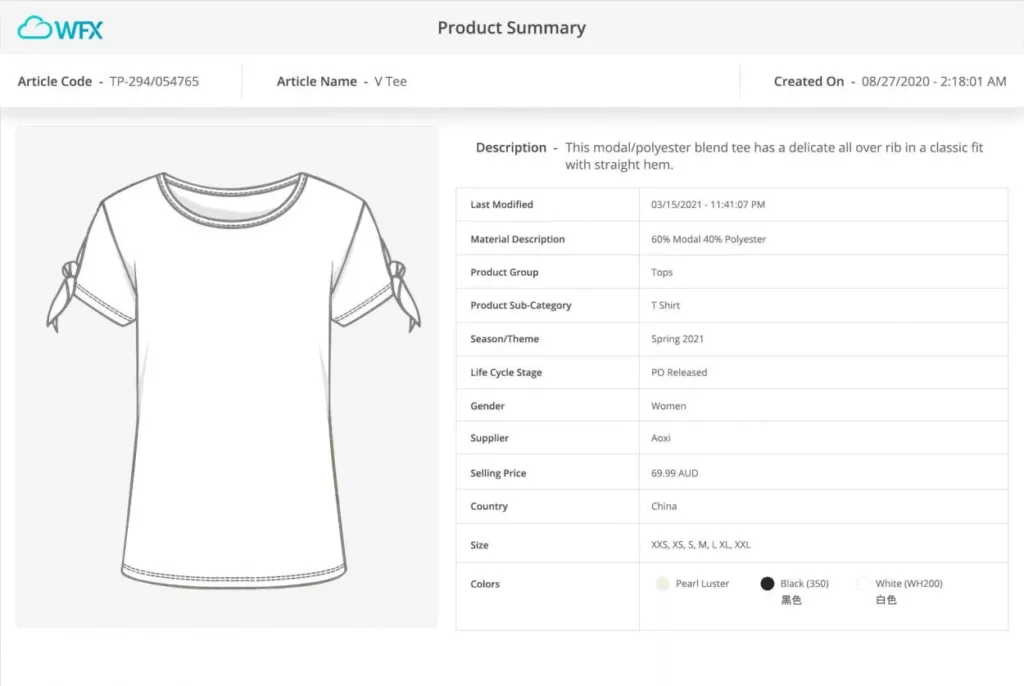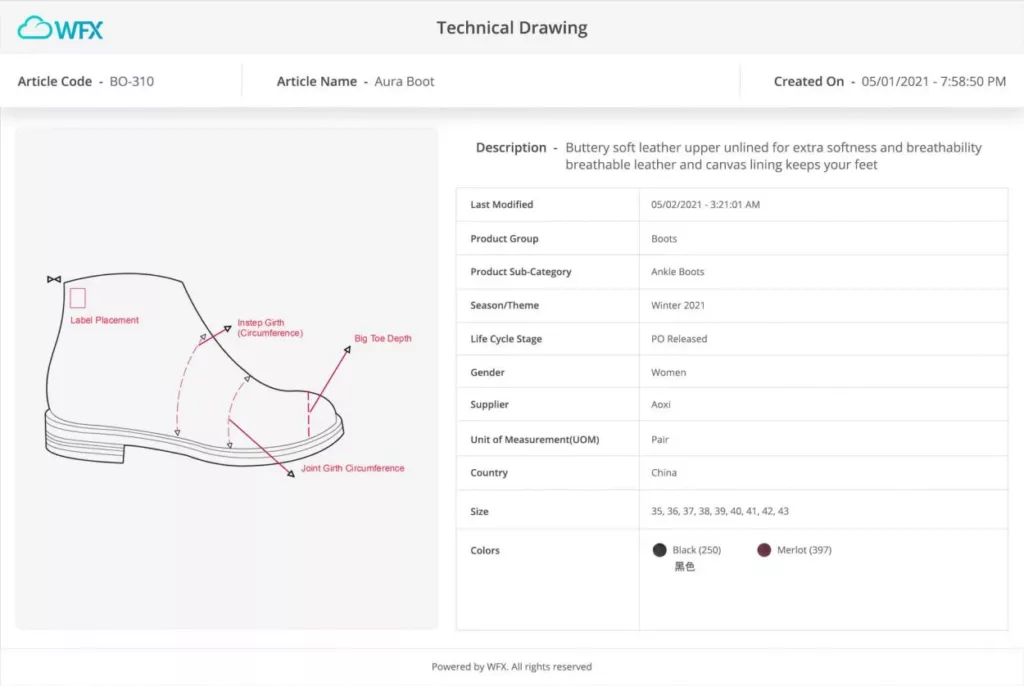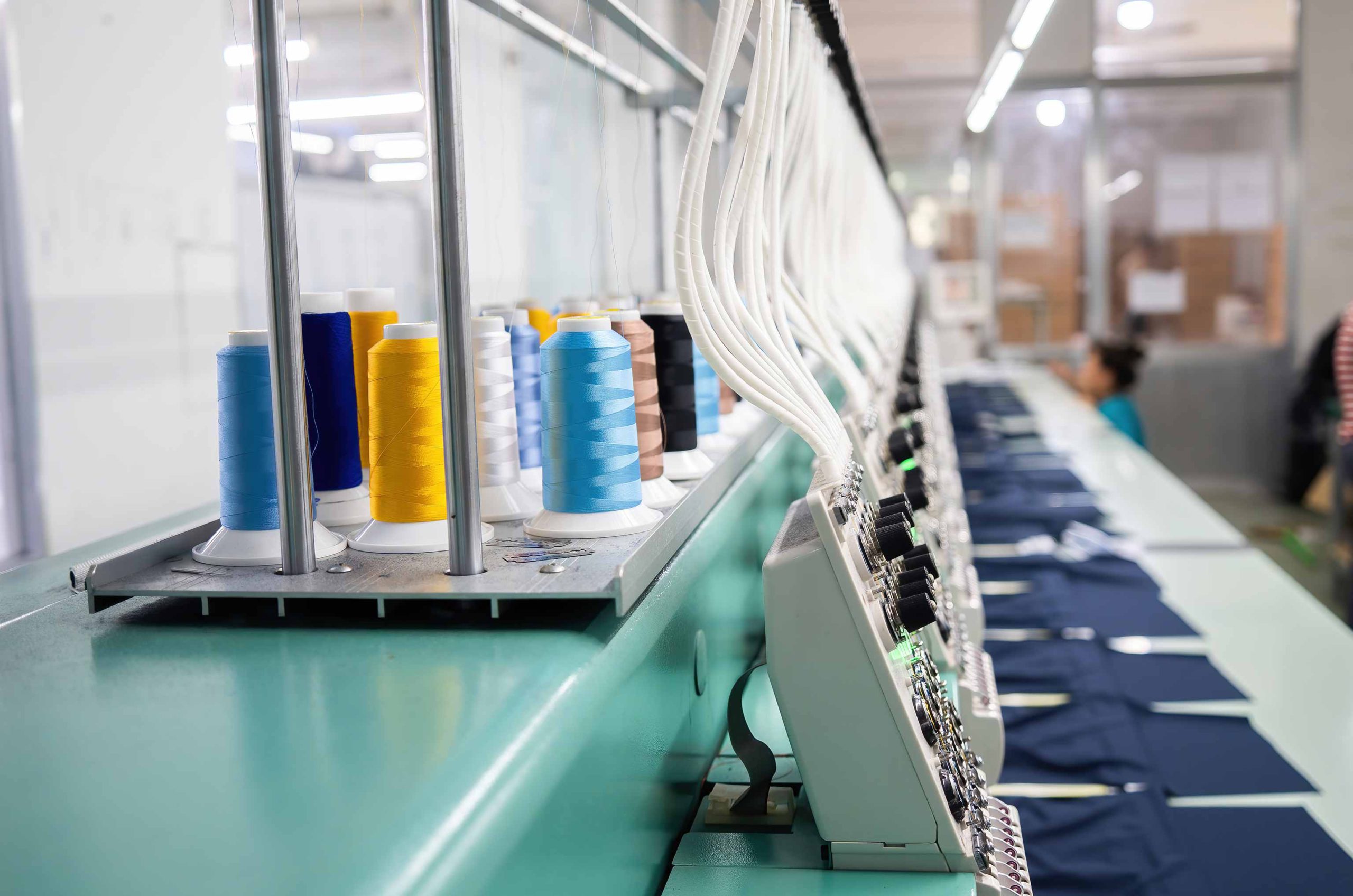Tech Pack 101: Everything you need to know about fashion tech packs
-
Introduction
The tech pack is an essential part of the fashion design process. When creating and editing a fashion tech pack, there is so much to consider. Where to begin? What information is really needed? What should you avoid in order to succeed?
Discover everything you need to know about fashion tech packs in this easy-to-follow guide.
-
What is a fashion tech pack?
A fashion tech pack (or technical package) is a document provided to factories by brands or designers in the apparel and fashion industry. The document contains information on how to make, construct, and assemble garments or any other fashion products. It serves as a ‘blueprint’ of sorts for the factory and ensures that each garment is made properly.
Fashion tech packs are typically created when producing fashion garments in larger quantities. For a smaller production line, spec sheets might also do the trick (more on this later).
The fashion tech pack contains everything the factory needs to know in order to make a sample, and then produce the collection. It includes technical drawings, measurements and grading rules, colorways, bill of materials, construction details, costing sheets, as well as reference images that explain how to make a garment.
In short, the tech pack details anything relevant that would need to be known in order to produce the garment properly and efficiently at factory level.
-
Important tip about including photos/sketches in tech packs!
When creating a tech pack for a new style, you should remember that factories may not understand a particular image the way you might expect them to. Images don’t always depict the necessary details for actual physical garment construction.
A photo may show buttons placed 1 inch apart, but if they aren’t labeled then major mistakes can occur (e.g., someone tries sewing buttonholes 0.5 inch away from each other instead). Color choice can also create issues since some colors look different depending on screen viewing quality/setting, (e.g., something blue might purple-ish on a sheet/screen).
This is why image annotations are your best friend. Give detailed written instructions with every reference image so that nothing gets lost in translation.
-
Important tip about including photos/sketches in tech packs!
When creating a tech pack for a new style, you should remember that factories may not understand a particular image the way you might expect them to. Images don’t always depict the necessary details for actual physical garment construction.
A photo may show buttons placed 1 inch apart, but if they aren’t labeled then major mistakes can occur (e.g., someone tries sewing buttonholes 0.5 inch away from each other instead). Color choice can also create issues since some colors look different depending on screen viewing quality/setting, (e.g., something blue might purple-ish on a sheet/screen).
This is why image annotations are your best friend. Give detailed written instructions with every reference image so that nothing gets lost in translation.
-
Key Inclusions for Fashion Tech Packs: Must-Haves for Success
Here are some things that should be included in all your fashion tech packs:
- PRODUCT SUMMARY – The product summary should be brief but clear. It should mention the article name, code, short description, product type (e.g., jacket, shirt, top), color, gender, date of creation, last modification date, season, supplier/country of origin, and retail price.
- TECHNICAL FLATS – Also called technical drawings or illustrations, they show how a garment would look when laid flat on a flat surface (hence the name). You must include technical sketches of how the products look from all angles—front, back, side and inside.
- MEASUREMENTS/GRADING SPECS – The measurements section outlines all measurements across all sizes for each garment design to help ensure proper sizing later on during production. It should also include tolerances for the respective sizes.
- COLOR DEFINITION – The color palette outlines what colors the garment is available in. While, colorways will show how these colors look when combined together or with other fabrics or materials. You might want to provide a few different options here for your manufacturer to choose from.
- BILL OF MATERIALS – The materials list shows all the fabrics and trims that go into a particular piece. You could also include information about hardware for zippers and buttons under this heading as well. This document is particularly important as it’s referenced by both parties for costing purposes as well.
- CONSTRUCTION DETIALS – Construction details will tell the manufacturing team how each part of the garment should be put together—from stitch types on seams to placement of pockets to closures like buttons and zippers.
- CARE INFORMATION – Care instructions are useful as they outline how end customers can clean/maintain each garment once they purchase it so products stay in good shape over time. These instructions may not necessarily need to come from you—you can always ask your manufacturer what they would recommend here instead.
- COST SHEET – A garment cost sheet is a detailed list of the costs associated with designing, manufacturing and shipping a garment. It includes the costs of fabric, trims, and labor (with respective quantities) for each garment.
- COMMENTS & FEEDBACK – This is where the product development team can review the sample, and add comments and feedback for any changes they expect from the manufacturer. This will help them make sure they’re on track with your vision for the product.
Before you get started, read this blog to know some expert tips and best practices for creating a successful fashion tech pack!
-
Why is it necessary to make a fashion tech pack?
Tech packs are usually created by the brand’s design team as a way to standardize their production, uphold quality control and instill brand consistency. Other benefits include:
- Reducing miscommunication between the various parties involved in making a garment, saving time and money, and improving efficiency.
- It’s an environmentally friendly solution, helping cut down on waste throughout the manufacturing process by ensuring that nothing is wasted from one product to another.
- It can be used to check the quality of a product sample by comparing it against the specifications in a tech pack and highlight the differences.
- They let you track each stage of the production process from start to finish, making sure that nothing gets missed along the way.
They’re helpful for shipping, as they provide instructions on how to pack your products, which helps keep them safe during transit. - It can help you find the right manufacturer for your budget. You can send a tech pack to multiple vendors and get product quotes to compare and negotiate prices, quantities, and terms.
-
The difference between a spec sheet and a tech pack
Although the terms are sometimes used interchangeably, spec sheets are actually a subset of a technical package. The short answer is that tech packs are more comprehensive and detailed than spec sheets.
Spec sheets describe your product in great technical detail. They are documents that outline things like product code/description, measurements, technical sketches, materials and trims, colors, and other details required to manufacture or source the product being made. They’re also generally flatter documents—i.e., they don’t use visual elements like mockups to display their information.
Meanwhile, tech packs are like the elder sibling to spec sheets. Apart from a spec sheet, they typically include way more information that’s required for producing a complete product line.
Tech packs can be 10–20 pages long (or longer) and include additional information such as grading sheets, order forms, garment specs sheets (which contain things like measurements), fabric requirements charts, bill of materials detailing every component in your product (such as labels or linings), construction methods (e.g., sewing steps), pattern sketches with dimensions attached, and even renderings or mockups which show how your product will look when completed.
-
How do you make a fashion tech pack?
Now that you know the what and why of tech packs, let’s get into the specifics of how it’s actually done.
The first step is to create a table of contents for your tech pack. You could reference a template or build a checklist on your own (based on your factory’s requirements). Then you can move on to gather and jot down all your technical specifications—things like the flat sketches for each side, measurements, colors, materials used, and so on.
The tech pack starts with measurements and drawings of your garment idea, then adds information about materials and production methods, such as how to cut different fabrics or how to create interfacing, and so on. Then it’s time for more detailed technical information on specific techniques involved in making the garments—such as sewing facings or attaching buttons.
Once you’ve filled out the checklist, you can add notes on additional needs like style edits or special requests about quality requirements.
-
How long does it take to make a tech pack?
It’s hard to say exactly how long you’ll spend creating a tech pack. The more complex the garment is, the longer it will take to put one together. While some simple items may take only an hour or two, even experienced designers can spend 5-10 hours on more ambitious garments.
How long it takes to make a tech pack depends on several factors:
If you have well-organized files, this will save you time during production. For example, if all your original sketches are saved in one place and labeled appropriately, this will make it much easier for the tech pack designer to list them down.
- If you’re working with multiple manufacturers that aren’t used to each other’s processes and documentation style, communicating back and forth can take extra time.
- If there are parts of the design process that need improvement (e.g., because of sloppy sketches), this could mean having to go back and re-do some things.
- Whether you’re using the latest technology to create your tech pack. If you’re using old school spreadsheet templates, you’re bound to be slowed down by interface that’s just not meant for visual information.
-
Making fashion tech packs easier with new tech!
Tech packs can be intimidating. They require you to gather all sorts of details about each style—and cram them into one big document which supposedly keeps everything organized. But don’t worry!
There are plenty of technological tools to make the process of creating tech packs extremely straightforward. In fact, you can create a tech pack online without having to go through the hassle of filling out pages, scanning them into PDFs, and sending out heavy email attachments.
Using a software tool like WFX PLM can help save you time and produce a concise, dynamic, easy to understand (and navigate,) document that ensures your specifications are clear. It lets you list all of the essential information about your design and allows your manufacturer to either view it online or download a PDF. Using an advanced software platform for creating and managing tech packs can reduce errors and ensures you never miss important details.
It facilitates collaboration by supporting real-time communication. Your teams can message each other and share feedback within the same platform on which they manage their tech packs—giving everyone access to a single source of truth regarding product information.
What’s more, the WFX PLM iOS app also lets vendors view those specs on the production floor instead of printing out a hard copy.
Confused about what’s the best medium for creating a tech pack? Let this blog help you decide between traditional formats like Excel spreadsheets VS advanced PLM software for tech pack development.
-
Fashion tech packs are important, but they don’t have to be hard
A tech pack is a collection of information that designers use to develop new products and communicate with manufacturers. But organizing information for your tech pack doesn’t have to be a chore.
When possible or appropriate, use existing templates so you can focus on learning how best to fill them out rather than spending hours making them from scratch. Likewise, don’t press on with time-consuming sheets, spreadsheets and templates when there are better solutions available. The most important thing is to take advantage of technology that will do most of the work for you! Don’t reinvent the wheel.
Remember that the fashion industry is always changing—but technology is the only way to stay one step ahead! It’s important to use technology to its fullest potential so you can save time and money while producing better work.
Click here to learn more about the tech pack development tool in WFX PLM.













